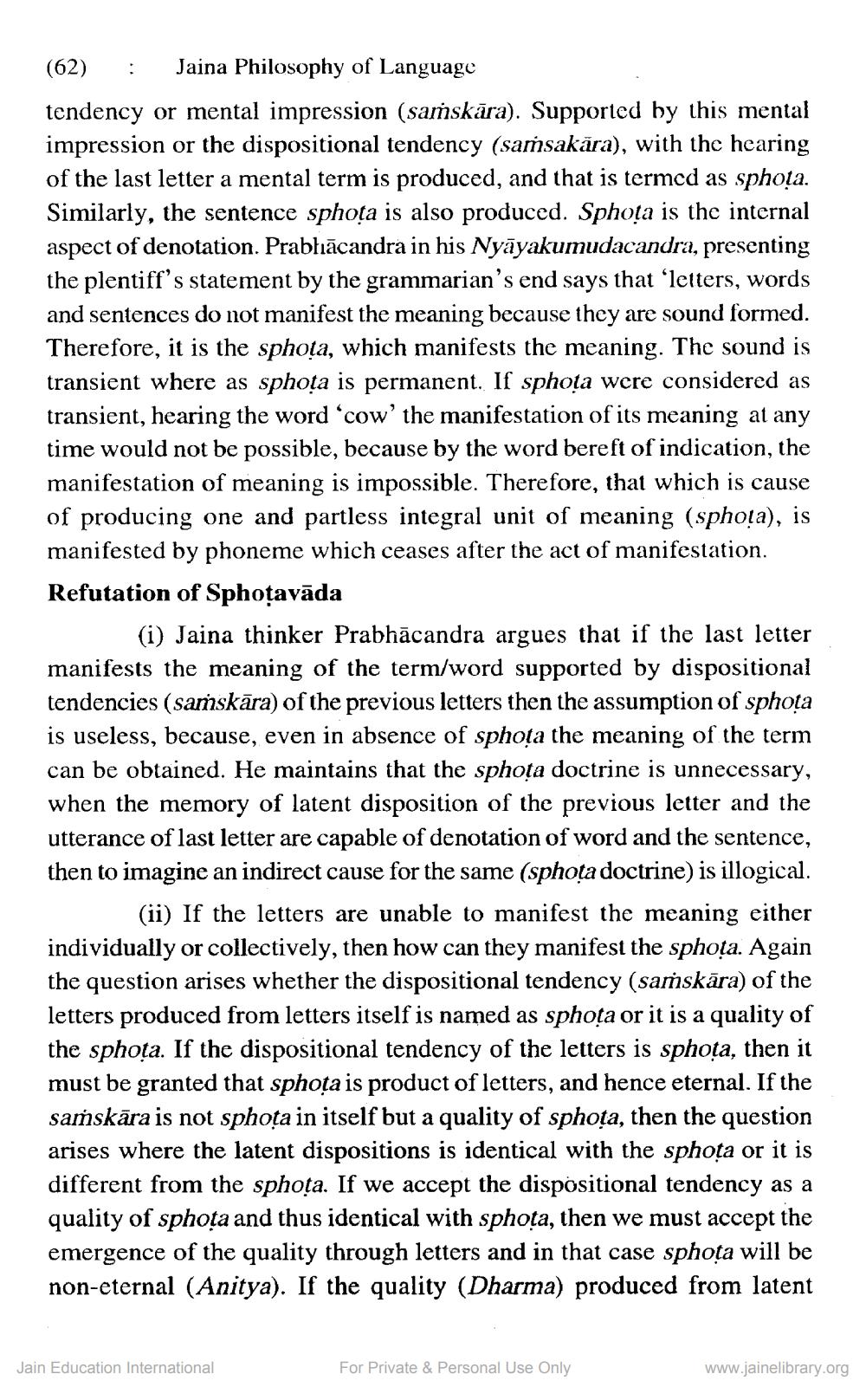________________
(62) : Jaina Philosophy of Language
tendency or mental impression (samskāra). Supported by this mental impression or the dispositional tendency (saṁsakāra), with the hearing of the last letter a mental term is produced, and that is termed as sphota. Similarly, the sentence sphota is also produced. Sphota is the internal aspect of denotation. Prabhācandra in his Nyāyakumudacandra, presenting the plentiff's statement by the grammarian's end says that 'letters, words and sentences do not manifest the meaning because they are sound formed. Therefore, it is the sphota, which manifests the meaning. The sound is transient where as sphota is permanent. If sphota were considered as transient, hearing the word 'cow' the manifestation of its meaning at any time would not be possible, because by the word bereft of indication, the manifestation of meaning is impossible. Therefore, that which is cause of producing one and partless integral unit of meaning (sphoța), is manifested by phoneme which ceases after the act of manifestation. Refutation of Sphoṭavāda
(i) Jaina thinker Prabhācandra argues that if the last letter manifests the meaning of the term/word supported by dispositional tendencies (samskāra) of the previous letters then the assumption of sphota is useless, because, even in absence of sphota the meaning of the term can be obtained. He maintains that the sphota doctrine is unnecessary, when the memory of latent disposition of the previous letter and the utterance of last letter are capable of denotation of word and the sentence, then to imagine an indirect cause for the same (sphota doctrine) is illogical.
(ii) If the letters are unable to manifest the meaning either individually or collectively, then how can they manifest the sphota. Again the question arises whether the dispositional tendency (saṁskāra) of the letters produced from letters itself is named as sphota or it is a quality of the sphota. If the dispositional tendency of the letters is sphota, then it must be granted that sphota is product of letters, and hence eternal. If the samskāra is not sphota in itself but a quality of sphota, then the question arises where the latent dispositions is identical with the sphota or it is different from the sphota. If we accept the dispositional tendency as a quality of sphota and thus identical with sphota, then we must accept the emergence of the quality through letters and in that case sphota will be non-eternal (Anitya). If the quality (Dharma) produced from latent
Jain Education International
For Private & Personal Use Only
www.jainelibrary.org




